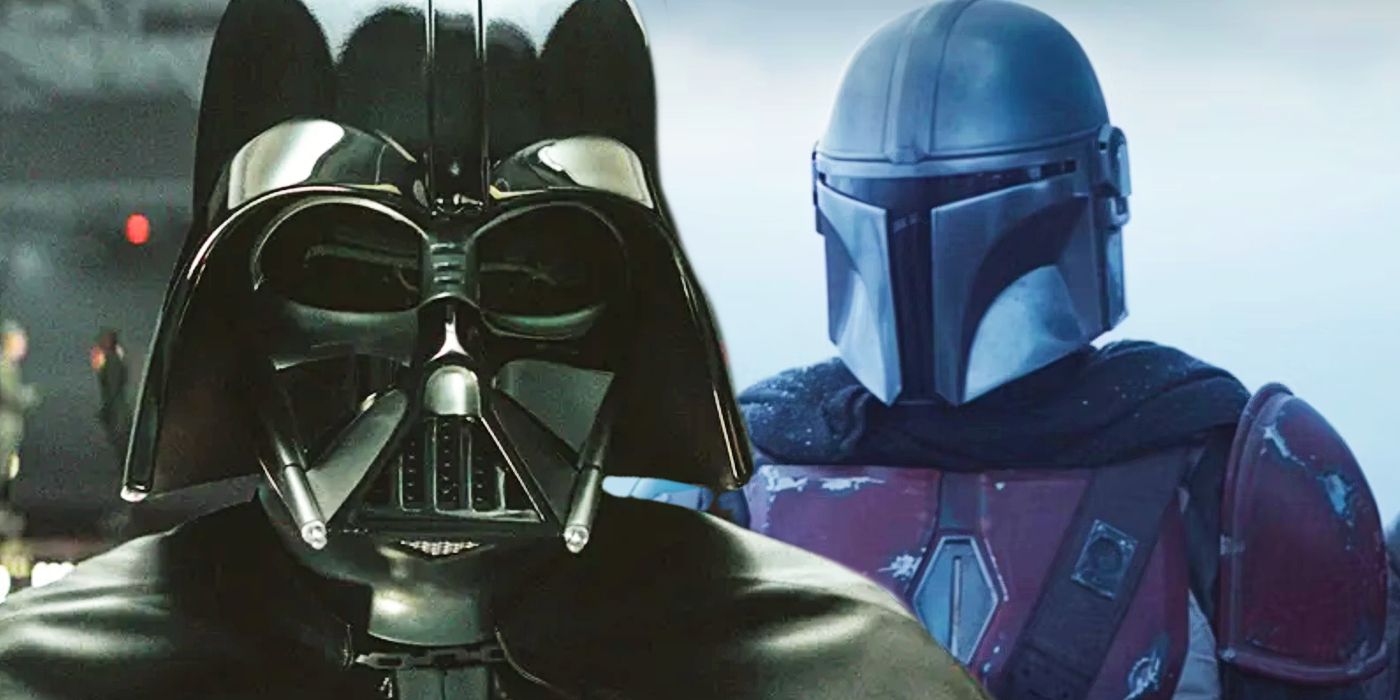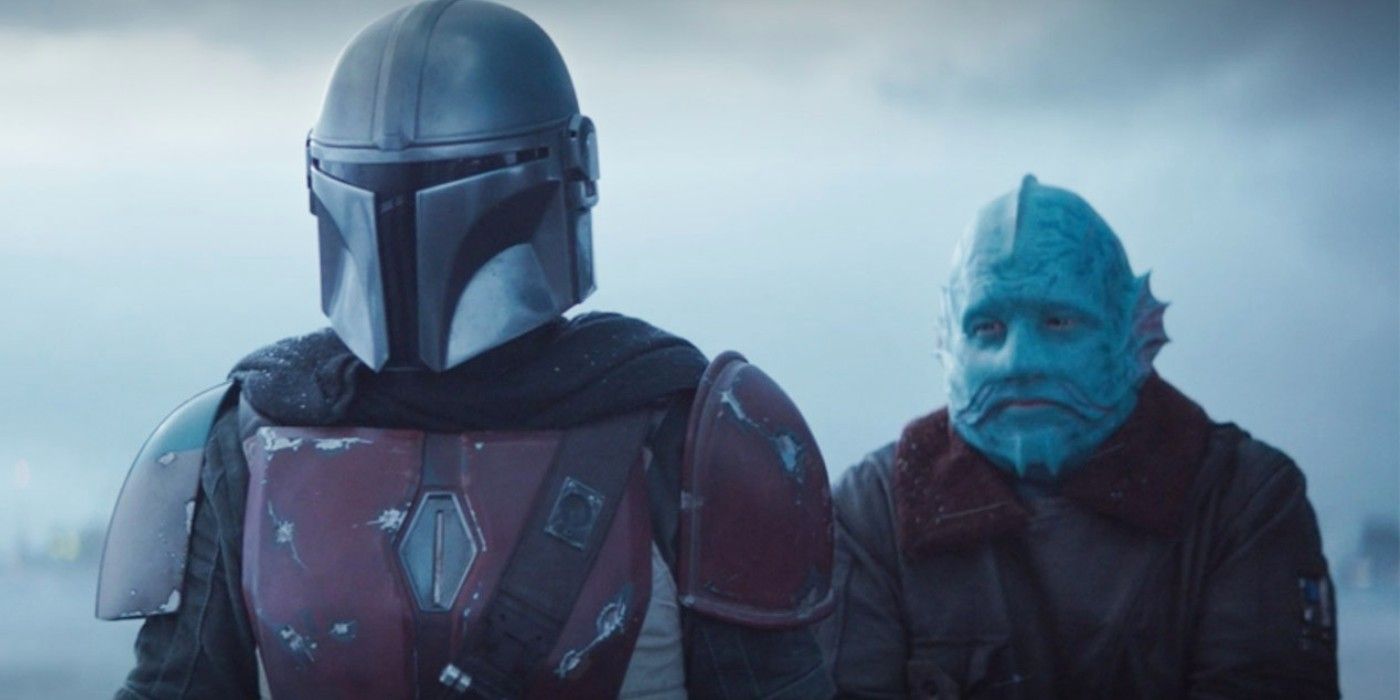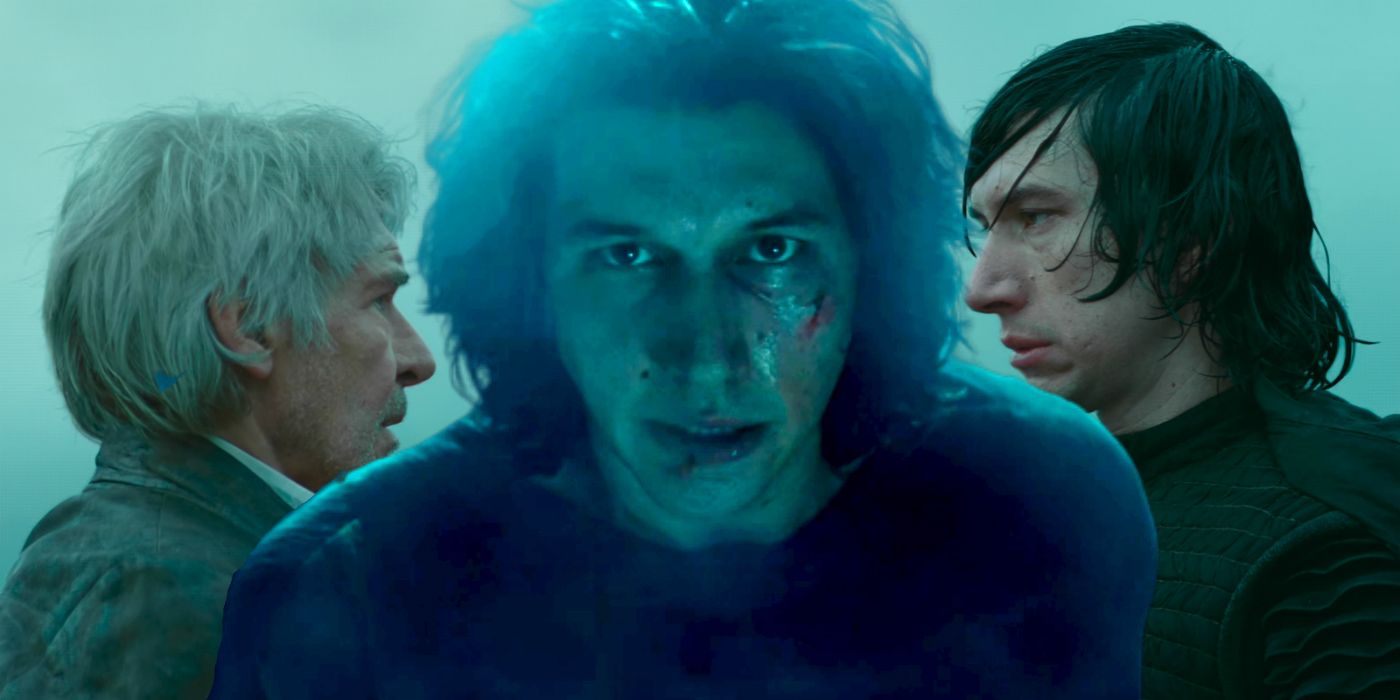The redemption of Din Djarin in The Mandalorian breaks a Star Wars trend that began with Darth Vader and Kylo Ren. Anakin Skywalker’s tragic rebirth as Darth Vader and subsequent redemption is one of the Star Wars franchise’s best character arcs, and something that the sequel trilogy tried to replicate with Kylo Ren. For better or worse, however, their respective sacrifices are part of a Star Wars franchise trend that The Mandalorian refreshingly avoids in its characterization of Din Djarin.
Din Djarin is hardly in the same league as Darth Vader and Kylo Ren, but while the bounty hunter is not a mass-murdering despot, he is introduced in The Mandalorian as a somewhat unscrupulous character, which is par for the course for someone in his profession. Upon encountering Grogu with orders to either kill him or condemn him to Imperial experimentation, however, Djarin chooses to adopt the youngling instead, gaining a loose moral compass and putting him at odds with the Bounty Hunters’ Guild in the process. This gives Djarin the sort of redemption arc that Darth Vader and Kylo Ren never had, making the dark sider users’ stories a greater degree of tragedy while providing the Star Wars franchise with a rarer type of character arc.
Why The Mandalorian Episode 1 Needed A Questionable Din Djarin
Redemption is a key component of Din Djarin’s characterization in The Mandalorian. In addition to rescuing Grogu just as he was once rescued by the Death Watch, Din Djarin also appears poised to reform Mandalorian culture itself as its potential reluctant ruler at the end of season 2 who, as of The Book of Boba Fett, will need to restore his Mandalorian status by visiting Mandalore itself. Djarin’s gradual redemption also makes him a perfect foil for Bo-Katan Kryze, who never truly reformed following her Clone Wars-era atrocities, but simply happened to end up on the right side several times.
Mandalorian's Happy Arc Makes Vader and Kylo More Tragic
Redemption arcs are not unheard of in the Star Wars franchise, with one notable example being the Legends continuity’s Mara Jade, the adopted daughter of Emperor Palpatine who served as the Sith Lord’s personal assassin before abandoning the dark side and becoming a Jedi. The story of Darth Vader himself even ended with the start of a long-term redemption arc in the non-canon comic series Star Wars Infinities: Return of the Jedi. The lost potential for such arcs for Darth Vader and Kylo Ren makes their stories all the more tragic.
The fact is a redemption arc, especially for villains who have committed countless atrocities like Darth Vader and Kylo Ren, requires a significant amount of time and development to properly set things right for them. Return of the Jedi and Star Wars: The Rise of Skywalker are each the end of their respective trilogies, making their respective villains’ redemption arcs too big of loose ends to leave unresolved. The deaths of Darth Vader and Kylo Ren, while tragic, are their most logical endings, while Din Djarin’s redemption arc starts in the first episode of The Mandalorian, giving the series all the time it needs to develop this rare type of story in the Star Wars franchise.



